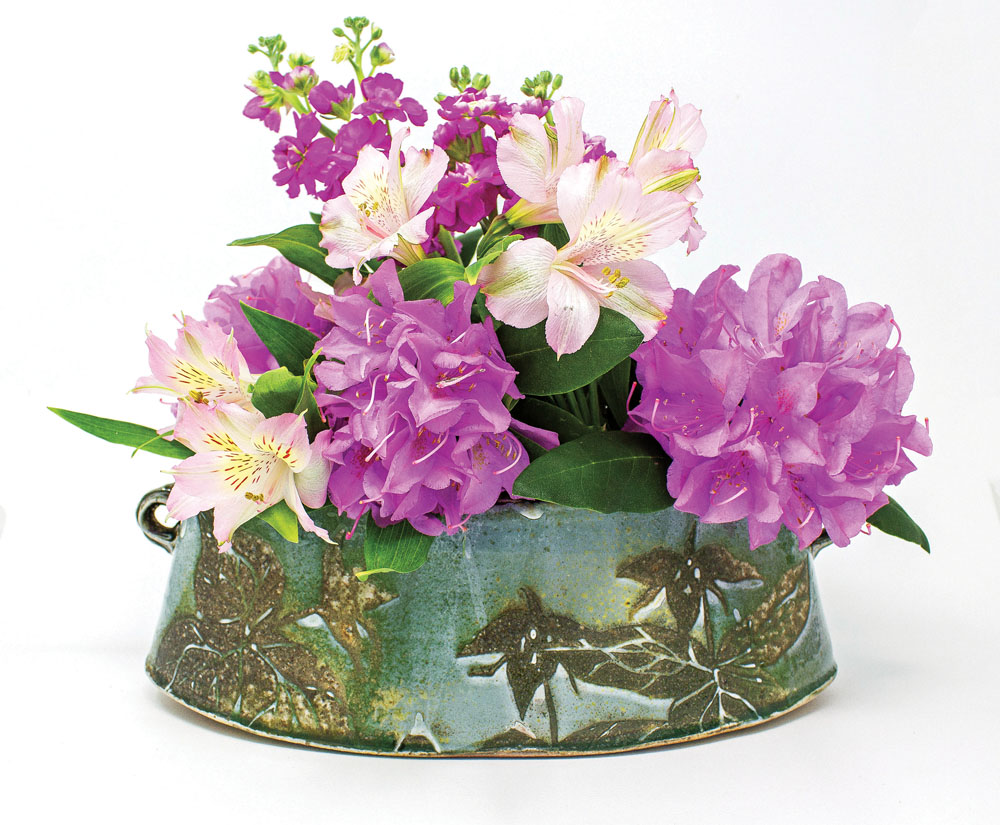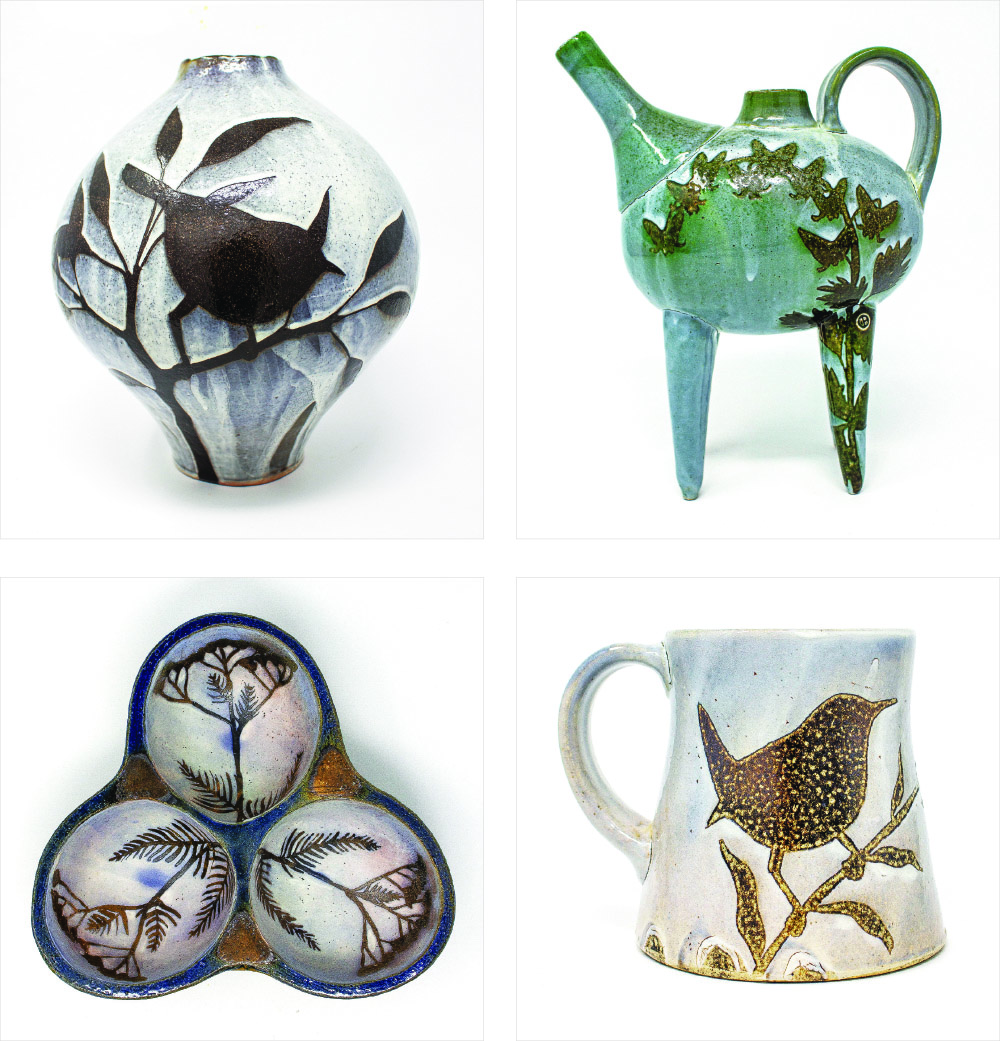
Christina Bendo first saw clay when the site for her family’s home, which her father designed and built, was excavated. “It was a defining part of my childhood,” declares Bendo. “I also remember clay being turned to create the huge garden that my parents still maintain.”
This “arts and crafts kid” went on to take some studio-art classes at the University of Mary Washington in Fredericksburg, Virginia, which proved pivotal. During college, Bendo also worked at a paint-your-own pottery business — a trendy place for parties — and jokes that she spent more time cleaning up birthday cake than making vessels.

After the store relocated to a new building, upstairs neighbor Trista Depp Chapman, a well-known potter, poked her head over the wall and asked Bendo if she was looking for a job. “I replied, ‘I think I am!’ and ended up working as her studio assistant for three-and-a-half years. She did lots of shows and was very involved in Fredericksburg’s arts community,” Bendo reminisces. Another part-time job at a local arts center gave Bendo the opportunity to manage its pottery studio, teach, and enjoy her first studio space.
Next, Bendo relocated near the world-renowned pottery center of Seagrove, North Carolina, in the Piedmont, where she worked for STARworks Center for Creative Enterprises and was introduced to the wood-firing process, which mesmerized her. “It’s quite different than firing with an electric kiln, which you can walk away from, and that typically yields predictable results,” she points out.

Observing the strong wood-firing community there fueled Bendo’s shift to the medium. “I still use an electric kiln for the first firing of my pots,” she explains, “but I also put my pieces in a wood kiln — which must be continually stoked — for 20 hours. This affects the clay’s color and the ash deposits create an interesting drip effect. The process creates more dimensionality on the surface of the pieces.”
After stints in such diverse locales as Haystack Mountain School of Crafts in Maine and the International Ceramics School in Hungary, where she worked as an artist-in-residence, Bendo landed in Waynesville five years ago, has her own studio downtown, and still enjoys teaching, now at Haywood Community College through its celebrated Professional Crafts Program.
Bendo uses North Carolina clay and an intentional, multi-stepped process to create vessels and other ware adorned with the unique flora and fauna of Western North Carolina. “We live in one of the most beautiful and biodiverse areas on Earth,” she enthuses, “and I love referencing organic imagery like birds and seed pods, but I’m also inspired by historical forms.” An example of the latter is an attenuated, long-legged teapot that references the medieval aquamanile — a figurative vessel (usually animal-shaped) that was used for hand washing.
“My work honors the season in nature and in life,” says Bendo.
Christina Bendo, Waynesville. The potter’s studio (24 Welch St.) is open Saturdays 9am-1pm and by appointment; follow updates on IG @christinabendopottery. Bendo’s work is also for sale at Twigs & Leaves Gallery in Waynesville (98 North Main St., twigsandleaves.com); at Heartwood Contemporary Crafts Gallery in Saluda (21 East Main St., heartwoodgallery.com); at WoodLands Gallery in Hendersonville (419 North Main St., woodlandsgallerync.com); and at other galleries throughout the state and country. She is stop #2 on the Haywood County Studio Tour happening Sept. 23 and 24 (haywoodarts.org).